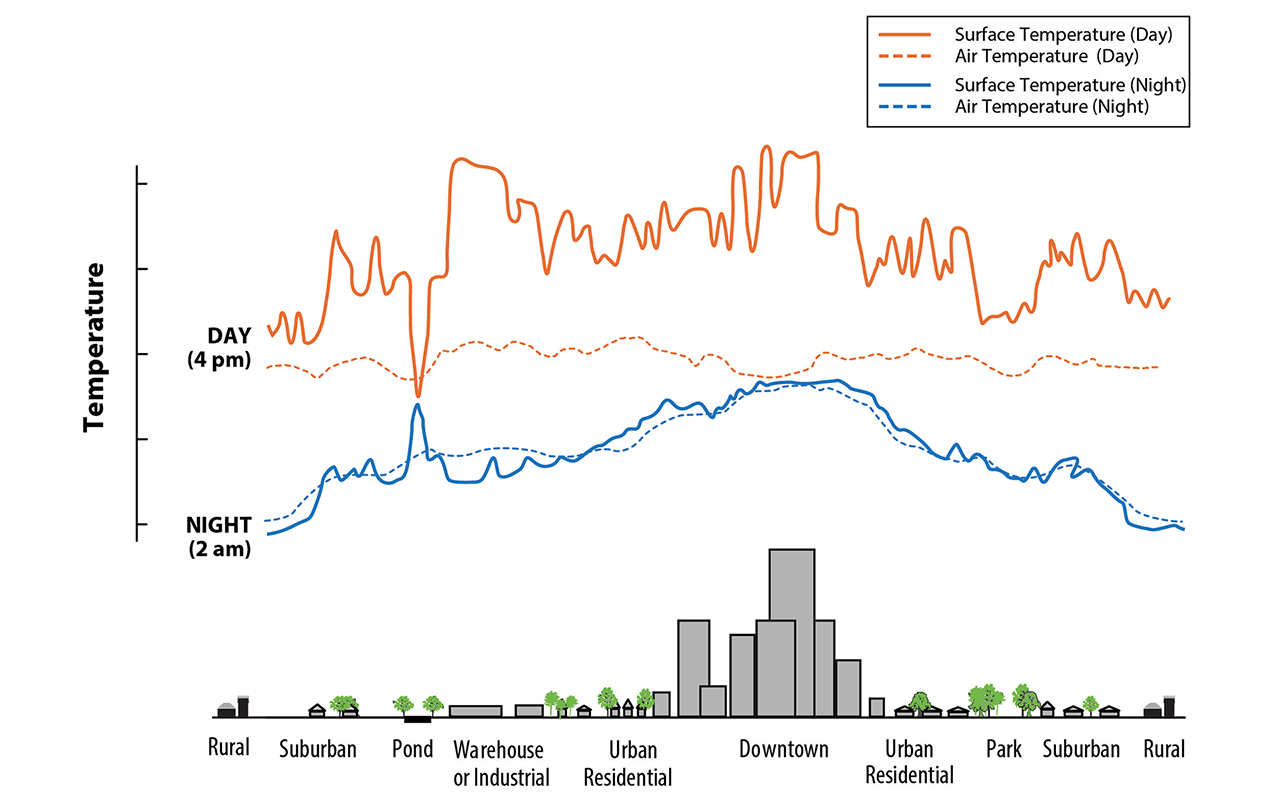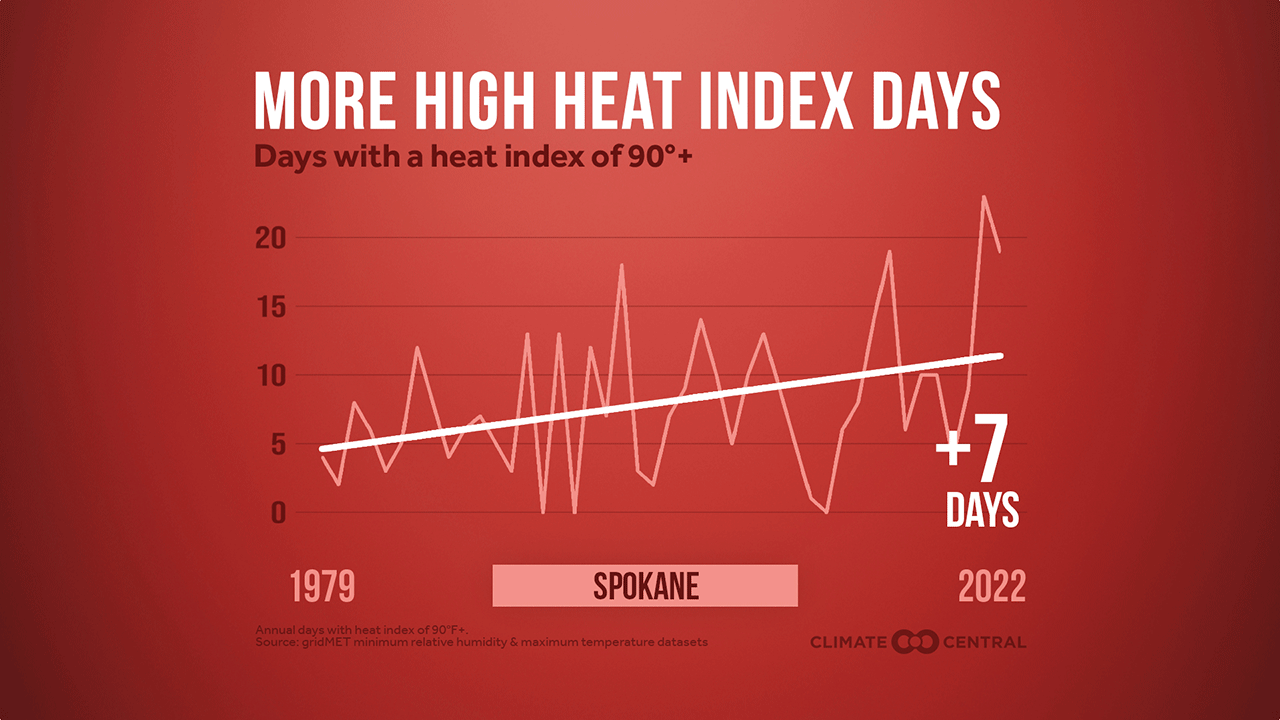
Let’s Talk Urban Heat!
Kaitlin Mellinder, Environmental Analyst, 509.220.3764
Tuesday, August 8, 2023 at 1:24 p.m.

Due to human activity and climate change, we are experiencing unprecedented climate difficulties like the urban heat island effect and heat domes!
Urban areas such as Spokane are made up of gray infrastructure, which includes bridges, roads, and buildings, and these objects are known to absorb and then re-emit the sun’s heat. Cities historically have also reduced green infrastructure like trees that provide a shaded canopy of coverage. Less shade is directly related to an increase in energy generation required to cool, which produces more greenhouse gas emissions. According to the EPA, for every two-degree Fahrenheit increase in temperature, the energy demand to run the air conditioning increases by up to 9 percent. A rise in temperature highlights the inequality between high- and low-income households. Low-income communities typically have less energy-efficient homes, and 30 percent of these homes report struggling to pay their energy bills or cool their homes. This has a direct effect on the homeowner’s ability to keep cool and could negatively impact their health.
All of these factors have increased overall city temperatures and have created a unique phenomenon within cities, known as the urban heat island effect. According to the EPA, the heat island effect is a result of daytime temperatures being absorbed into the City’s gray infrastructure, and this raises the overall temperature by one to seven degrees during the day when compared to nearby natural regions. At night, the temperature within cities can be roughly two to five degrees higher than in natural regions due to the gray infrastructure absorbing the hot temperatures during the day and re-emitting that heat into the air during the evening.

Figure 1. EPA’s Heat Island Effect Diagram
On top of the urban heat island effect, in the Pacific Northwest we have been experiencing a similar heat-related issue known as heat domes. If Pacific Ocean temperatures have a dramatic change from west to east in the preceding winter, then heat domes typically occur due to the sweltering heat getting trapped under the high-pressure dome. Unlike heat waves that come and go, heat domes seal the heated air in a location for an extended period of time. These heat-related challenges of today can even be measured.
In 2022, Gonzaga University researched how urban heat is distributed throughout the city. The study found that, “due to differences in tree cover, green spaces, and dark surfaces, some areas in Spokane are as much as 13.9 degrees warmer. A 90-degree day in one neighborhood could be 104 degrees in another. According to Spokane Beat the Heat research, not all regions or demographics in Spokane are equally affected by extreme heat. Differences in green space and the built environment, mean that some people in Spokane experience more heat than others, which is environmentally unjust.” However, there are actions we can take!

Figure 2. Climate Central high heat index days in Spokane
To decrease the effects of urban heat, the EPA proposes nature-based solutions like planting trees. Trees can increase the shaded canopy coverage, which will reduce the overall surface temperature. Urban areas are often crowded with limited space, the EPA recommends planting trees in vacant lots, street right-of-way, or barren areas. City of Spokane’s Urban Forestry Department works with the Lands Council to achieve the City’s ordinance goal to increase Spokane’s tree canopy to 30 percent by 2030. Community members can participate in the SpoCanopy program by planting native trees that are drought-tolerant and provide shade. Another solution is installing green roofs to offer direct and surrounding cooling effects.
Future heat-related issues can be solved through local government programs and policies. By targeting regions with a higher percentage of gray infrastructure and transitioning it to green infrastructure, we can help reduce the overall citywide temperature and better address environmental inequalities.
Learn more about City of Spokane Environmental Programs.
More About...
- atmosphere
- Climate
- Community
- Data
- Earth
- emissions
- Energy
- Environment
- Equity
- future
- Greenhouse Gas
- Health
- Heat Dome
- Heat Island
- Housing
- Live
- Transportation
- Urban
